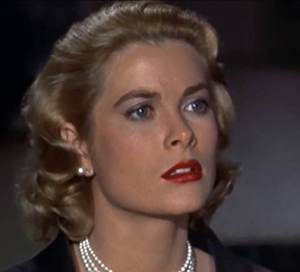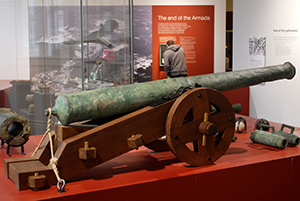ON THIS DAY
Published in Issue 5 (September/October 2020), News, Volume 28BY AODHÁN CREALEY
SEPTEMBER
14/1982

Above: Grace Kelly in Alfred Hitchcock’s Rear Window (1954).
Princess Grace of Monaco (52) died, a day after suffering a stroke and crashing her car. Princess Grace, of course, was the former actress Grace Kelly, daughter of John B. Kelly Jr of Philadelphia, the affluent owner of a brickwork contracting company, and granddaughter of John Peter Kelly from Drimurla, just outside Newport, Co. Mayo, who left his cottage in 1887 and emigrated to Philadelphia, where he founded a lucrative brick-making firm. And a fine actress she was, too, best remembered, perhaps, for her role opposite Gary Cooper in the classic High Noon (1952) and as ‘an icy blonde’, as Hitchcock described her, in three of his classic thrillers: Dial M for Murder (1954), Rear Window (1954) and To Catch a Thief (1955). And though she then gave up acting and married a handsome prince, she never forgot her Irish roots and made three visits here. The first was in the summer of 1961—a three-day state visit, followed by a four-day private holiday—the highlight of which was her visit to ‘Kelly Country’. After meeting with some 70 relatives, including nine second cousins, in Westport, she was taken to the whitewashed cottage in Drimurla—spruced up and re-thatched—at the end of a twisting lane where her grandfather was born. There she was greeted by the owner, a 68-year-old widow, Ellen Mulchrone, wearing a black dress and her best apron. After treating the princess to cake, soda bread and biscuits and regaling her with a poem she had composed especially for the occasion, the widow gave her a tour of the cottage. ‘She’s a lovely girl’, she told journalists afterwards. ‘We had a great chat.’
05/1820
Pope Pius VII approved the Irish Christian Brothers, founded by Edmund Ignatius Rice.
07/1940
The London Blitz began when the German Luftwaffe bombed the East End docklands, killing over 400 people.
12/1980
The Republic of Ireland and the People’s Republic of China exchanged ambassadors for the first time, with John Campbell taking up his post in Peking and Madame Gong Pusheng taking up residence in Dublin.
20/1920
Two RIC officers were shot dead in a public house in Balbriggan, Co. Dublin, after which the RIC and Black and Tans rampaged through the town, burning business premises and houses. Two suspected republicans were bayoneted to death.
20/1920
Three British soldiers from the Duke of Wellington’s Regiment, including Pte Harold Washington (15), were shot dead by the IRA as they collected bread from Monk’s bakery in North King Street, Dublin. Kevin Barry (18) of H Company, 1st Battalion, Dublin Brigade, was arrested at the scene.
22/1920
Five RIC officers and a Black and Tan were killed in an IRA ambush at Rineen, Co. Clare. The towns of Ennistymon, Lahinch and Miltown Malbay were later attacked in reprisal and at least five civilians were killed.
22/1970
Charles J. Haughey, Captain James Kelly, Albert Luykx and John Kelly were charged in the Central Criminal Court with conspiring to illegally import arms and ammunition. The jury was discharged on 29 September.
28/1920
Units of Cork No. 2 (North) Brigade led by Liam Lynch and Ernie O’Malley captured the military barracks in Mallow, Co. Cork, the only one captured during the War of Independence, and recovered a large quantity of arms and ammunition. Mallow was sacked in reprisal.
OCTOBER
28/1588

Above: A cannon recovered from the wreck of La Girona of the Spanish Armada on display in the Ulster Museum, Belfast. (Alamy)
La Girona, a 700-ton galleass of the Spanish Armada, foundered and sank off Lacada Point, just east of Dunluce Castle in north Antrim. Some weeks earlier, Alonso Martinez de Leiva, commander-in-chief designate of the Armada, having at that stage been twice shipwrecked and suffering from a broken leg, had made his way along with his 1,000 men to Killybegs, Co. Donegal, where he joined some 600 others—the largest Spanish force ever assembled in Ireland. There he set about repairing the Girona, one of three Spanish vessels that had washed up there but the only one afloat. Having crammed on board some 1,300 men, ‘the best of the Spaniards’, including three ship’s captains and hundreds of wealthy nobles, he set sail for Scotland, but disaster lay ahead. Having successfully negotiated the turbulent waters off Bloody Foreland and Inishowen, the ship lost her rudder in a northerly gale and was blown onto the Antrim coast, where she struck a reef and literally split apart. There were only nine survivors, making it a disaster just a few hundred less than the Titanic (1912). Some 200 bodies were washed ashore and buried under the supervision of local chieftain Sorley Boy MacDonnell in a common grave in the local graveyard. In 1968 the Belgian archaeologist Robert Sténuit discovered the wreck and brought some 12,000 artefacts to the surface. These included personal possessions of her aristocratic victims, including 1,276 gold, silver and copper coins, 35 items of jewel-encrusted gold, twelve gold rings, eight gold chains and two silver crucifixes. The collection is on permanent display at the Ulster Museum.
03/1870
Richard Barter (68), physician who established Ireland’s first hydropathic/water cure establishment in Blarney, Co. Cork (1842), and helped to introduce Turkish baths into Britain, died.
03/1970
President Richard Nixon arrived on a 48-hour visit to the Republic of Ireland, during which he visited the grave of his distant Quaker ancestors in Timahoe, Co. Kildare.
06/1970
A new trial of Charles J. Haughey and three others on charges of conspiring to import arms and ammunition to the Republic opened. All four were found not guilty on 23 October.
14/1920
Seán Treacy of the IRA’s 3rd Tipperary Brigade was killed in a gun battle in Talbot Street, Dublin.
18/1970
Máirtín Ó Cadhain (63), perhaps the greatest modern writer in the Irish language, whose novel Cré na Cille (1949) was chosen by UNESCO for translation into several European languages, died.
20/1870
Michael Balfe (62), composer who wrote several operas for performance at Drury Lane, most famously The Bohemian Girl (1843), died.
23/1960
Seamus MacManus (91), poet, historian and novelist, died. His wife, the writer Ethna Carbery, died suddenly just a year after their marriage (1902).
25/1920
Terence MacSwiney (41), lord mayor of Cork, died after 74 days of hunger strike in Brixton Prison, London.
27/1980
The first hunger strike in the Maze Prison began when seven prisoners refused to take food in support of their demand to wear their own clothing. In mid-December they were joined by 23 additional prisoners.
31/1970
The remains of three mutineers who were convicted for their roles in the Connaught Rangers Mutiny (1920)—Pte James Daly, who was executed, and Pte Peter Sears and Pte Patrick Smith, both of whom died of their wounds—were returned to Ireland for reburial.
















